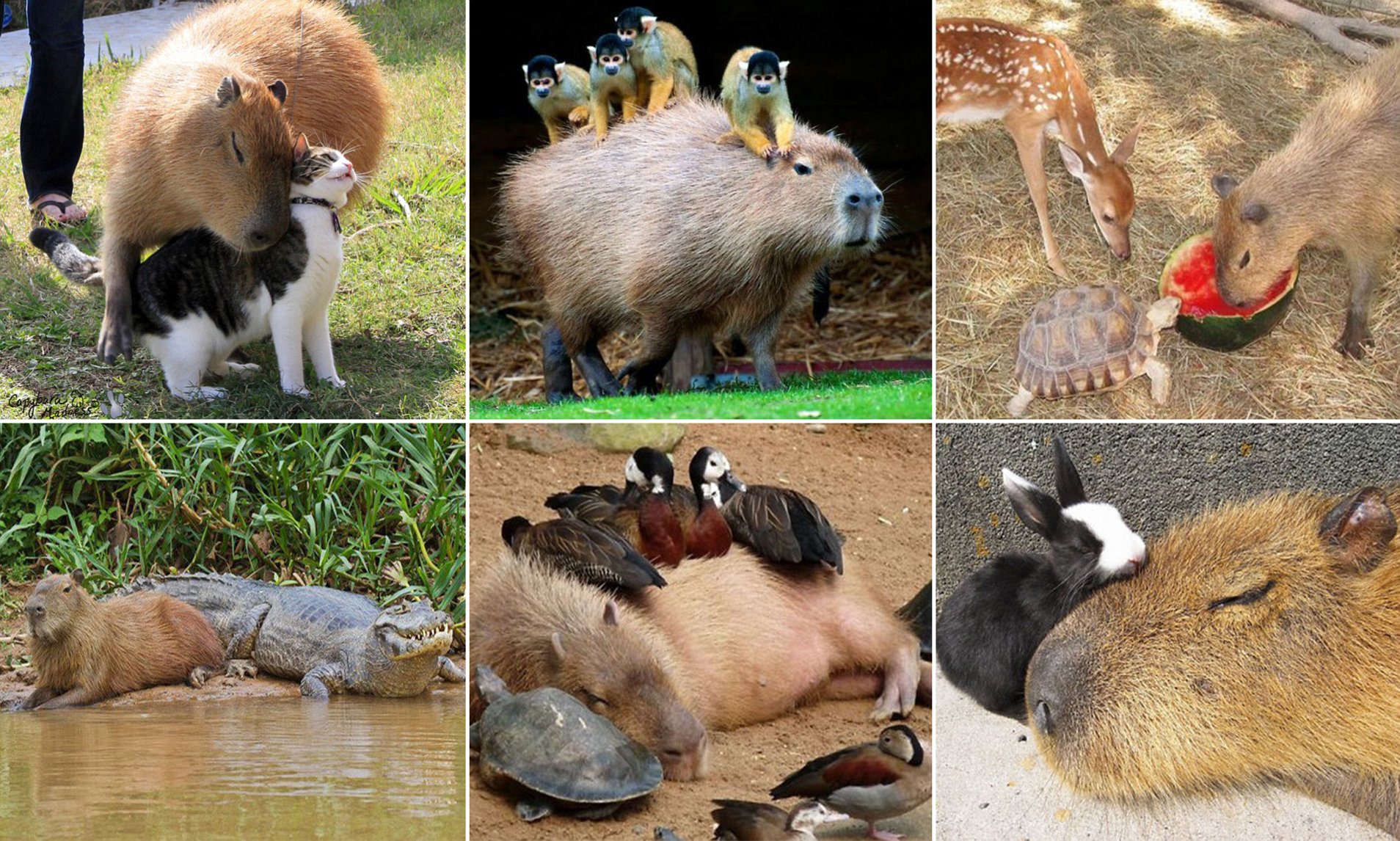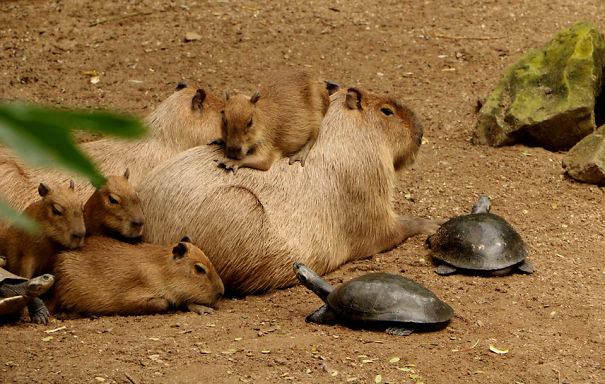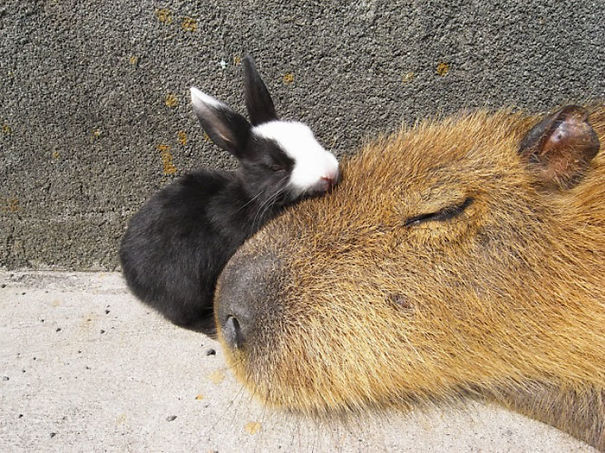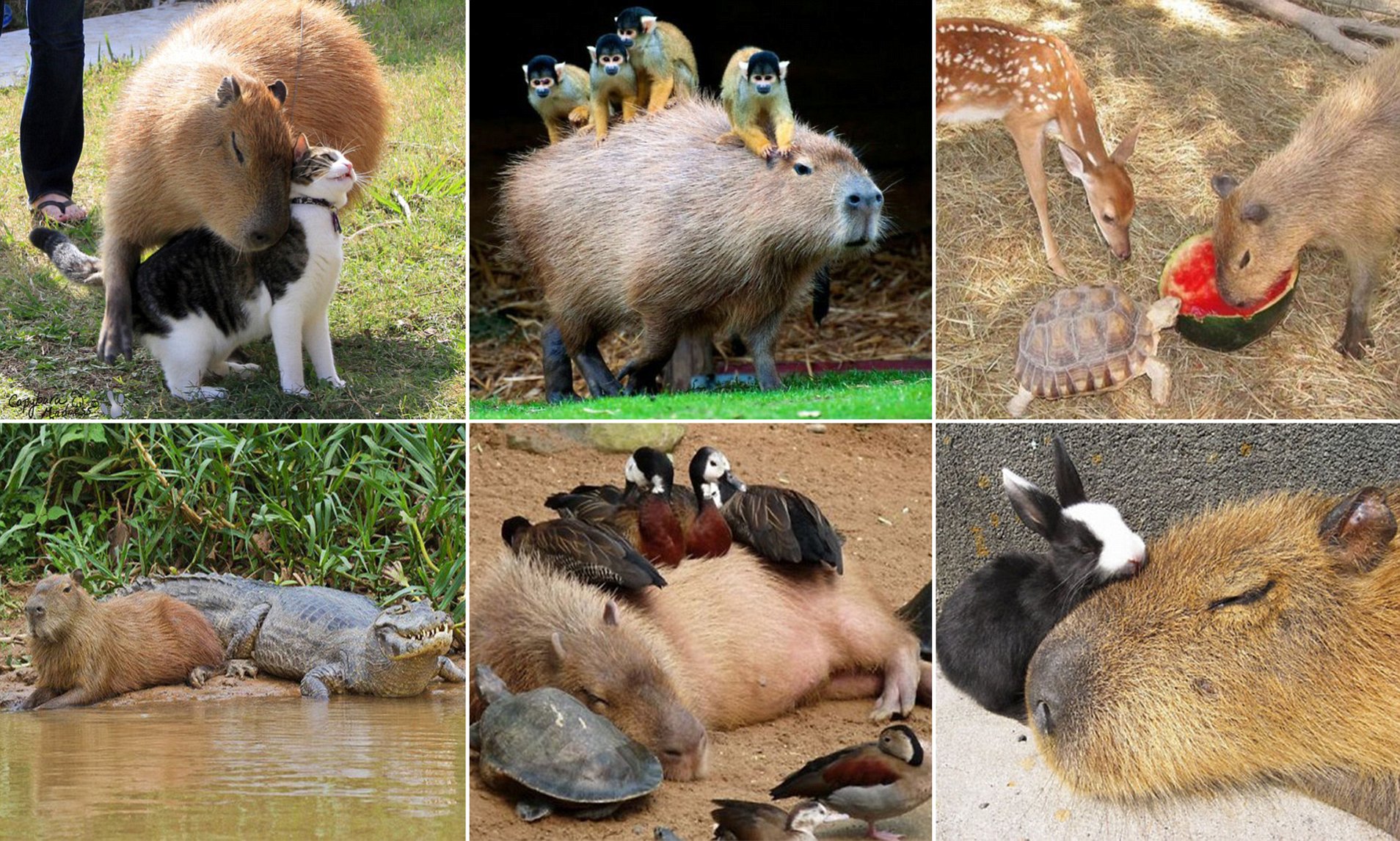Imagine a world where different species peacefully coexist, forming unexpected friendships and creating a harmonious environment. In this enchanting realm, one animal stands out for its ability to effortlessly socialize with a diverse range of beings: the capybara. These gentle giants have become renowned for their friendly and laid-back nature, often seen lounging in the company of birds, monkeys, and even crocodiles. Their peaceful coexistence with other animals is not merely a coincidence; it serves as a reminder of the remarkable bonds that can be forged between the most unlikely companions.

Capybara’s Behavior and Characteristics
Social and Semi-Aquatic Nature
Capybaras are highly social animals and live in groups known as herds. These herds usually consist of around 10 to 20 individuals, although larger groups can sometimes be observed. Within the herd, there is a strong sense of camaraderie and cooperation. Capybaras communicate with each other through a variety of vocalizations, including purrs, whistles, and barks, as well as through body language such as nose touching and grooming.
One of the most noteworthy characteristics of the capybara is its semi-aquatic nature. These creatures are excellent swimmers and often inhabit areas near bodies of water such as rivers, lakes, and marshes. They have webbed feet and can even hold their breath underwater for up to five minutes. Their love for water is not just for swimming, as they also use it as a means to regulate their body temperature and avoid overheating.
Herbivorous Diet
Capybaras are herbivores, which means their diet consists mainly of plants. They graze on a variety of vegetation, including grasses, aquatic plants, and even tree bark. Their flat molars and strong jaws allow them to process tough plant material efficiently. Additionally, capybaras have a unique digestive system that enables them to extract as many nutrients as possible from their plant-based diet.
Adaptability to Different Environments
Capybaras are incredibly adaptable animals and can thrive in a variety of habitats, including grasslands, swamps, and tropical rainforests. They are native to South America but have also been introduced to some regions of North America and Europe, where they have successfully established populations. This adaptability is partly due to their ability to consume a wide range of plant species, allowing them to find food in different environments.

Capybara’s Interactions with Birds
Capybara and Water Birds
Capybaras often share their aquatic habitats with various species of water birds. These birds, such as herons and egrets, benefit from the presence of capybaras as they provide a sense of security. Capybaras have an excellent sense of hearing and vision, allowing them to detect potential predators that may threaten both the capybaras and the birds in the vicinity. In return, birds act as an extra set of eyes and ears, providing an early warning system for any approaching danger.
Capybara and Land Birds
While capybaras are more commonly associated with water-dwelling creatures, they also interact with land birds in their surroundings. Capybara herds have been observed to create spaces in their communal grooming sessions for small birds to join in. These tiny avian visitors help rid the capybaras of parasites and pests, forming a symbiotic relationship. The capybaras benefit from the pest control, while the birds gain access to a steady food source and protection within the herd.

Capybara’s Relationship with Reptiles and Amphibians
Capybara and Turtles
Capybaras and turtles often coexist peacefully in shared habitats. Turtles, particularly those that are partially aquatic or semi-terrestrial, find the presence of capybaras beneficial. Capybaras graze on vegetation near the water’s edge, creating clearings that turtles can bask in. These basking spots provide turtles with a warm and safe environment where they can regulate their body temperature. In return, turtles contribute to the ecosystem by consuming algae and small invertebrates that may otherwise overpopulate the water.
Capybara and Frogs
Frogs are another group of animals that interact with capybaras in a mutually beneficial manner. Capybara ponds and waterways offer ideal breeding grounds for many frog species. The standing water provides a safe environment for frog eggs and tadpoles to develop, away from predators and harsh conditions. Additionally, capybara herbivory helps maintain a healthy balance of vegetation in these habitats, creating suitable cover and food sources for the amphibians.

Capybara’s Coexistence with Small Mammals
Capybara and Guinea Pigs
Capybaras and guinea pigs belong to the same family, making them distant relatives. Despite their size difference, these two species can coexist peacefully. In some cases, guinea pigs have been observed living alongside capybaras and even sharing the same burrows. Capybaras provide a sense of security for guinea pigs, as they act as vigilant sentinels, alerting the group to potential threats. This cooperative behavior benefits both species and fosters a sense of camaraderie within the rodent community.
Capybara and Rabbits
Capybaras and rabbits also have the potential to coexist harmoniously. Both species are herbivores and share similar dietary preferences. This commonality can reduce competition for food resources and encourage mutual tolerance. Additionally, capybaras’ large size and social nature may help protect rabbits from potential predators. By forming mixed-species groups, these animals can increase their chances of survival, benefiting from each other’s strengths and alertness to danger.

Capybara’s Interaction with Larger Mammals
Capybara and Cattle
Capybaras and cattle often share grazing grounds, especially in areas with abundant pastures or wetlands. Capybaras benefit from the presence of cattle as they create opportunities for grazing by reducing vegetation height and allowing capybaras access to areas that would otherwise be densely covered. Additionally, capybaras’ social nature and alertness can alert cattle to the presence of predators, providing an added layer of security against potential threats.
Capybara and Horses
Similar to their interaction with cattle, capybaras can coexist peacefully with horses. Capybaras’ grazing habits can help maintain open spaces within pasture areas, benefiting both capybaras and horses. Capybaras typically avoid direct contact with horses and choose to keep a safe distance. Horses, on the other hand, may show occasional curiosity towards capybaras, but as long as both species are given enough space and respect, their interactions remain generally calm and non-confrontational.
In conclusion, capybaras are remarkable animals with a peaceful coexistence with a wide range of other species. Their social nature, semi-aquatic lifestyle, and herbivorous diet contribute to their ability to interact positively with various animals. Whether it’s birds, reptiles, amphibians, small mammals, or even larger mammals, capybaras exemplify the beauty of harmonious relationships in the animal kingdom.



